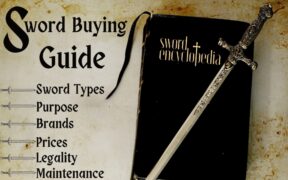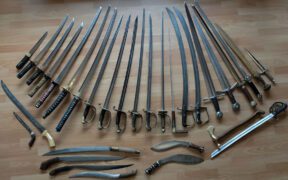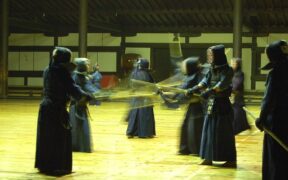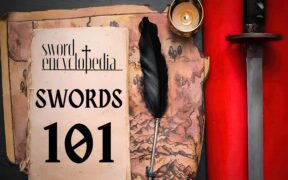Our content features commercial links to our products, committed to transparent, unbiased, and informed editorial recommendations. Learn More
All You Need to Know About the Hattori Hanzo Sword
NO AI USED This Article has been written and edited by our team with no help of the AI
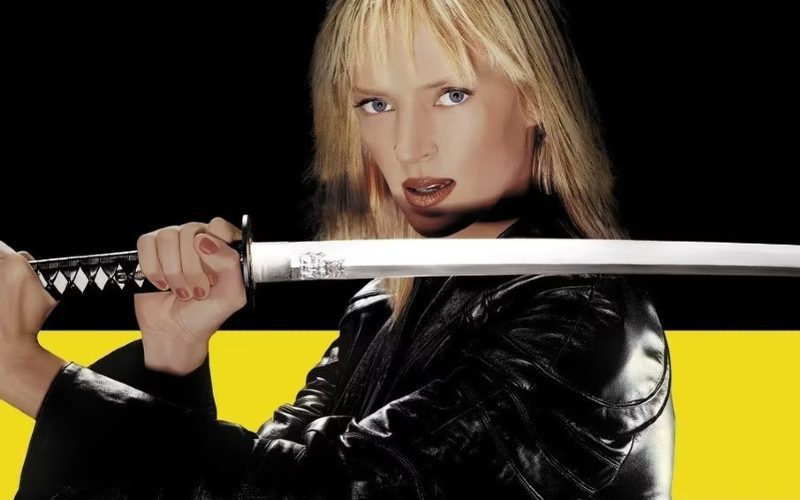
In Quentin Tarantino’s Kill Bill film series, the Hattori Hanzo sword serves as the deadly weapon of protagonist Beatrix Kiddo, better-known as the Bride, on her quest for vengeance. It is sometimes called The Bride’s Sword since the story does not reveal the wielder’s name until Kill Bill Vol. 2. Inspired by the Japanese samurai sword, the fictional sword remains popular among movie fans, cosplayers, and collectors.
Let’s explore the story and characteristics of the Hattori Hanzo sword and how it compares to the historical katana sword.
Characteristics of the Hattori Hanzo Sword
The Kill Bill sword has the typical features of a Japanese katana, but it has distinctive elements adapted to the film.
Here are the unique characteristics of the Hattori Hanzo sword:
Metal and Construction
In the film, swordsmith Hattori Hanzo hand forged the Bride’s sword. While Kill Bill does not mention the type of steel used for the blade, traditional Japanese swordsmiths use the tamahagane produced in a tatara smelter in Japan. However, the prop sword used in the stunts likely had a high-carbon steel blade blunted for safety.
Today, several reproductions of Hattori Hanzo swords feature stainless steel blades, making them decorative weapons. Still, there are also ones that are fully functional for backyard cutting practice. For a sword to be considered battle-ready, it must be a high-quality carbon steel sword, have good tempering, usually clay tempered, and have a full-tang blade.
Blade Appearance
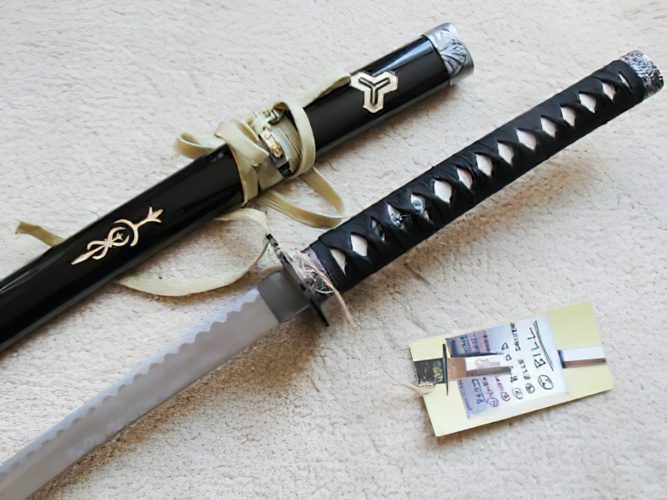
As a katana, the Hattori Hanzo sword is curved and single-edged. It also features a hamon or temperline pattern, the distinctive feature of Japanese blades. However, most reproductions have acid-etched hamon and are not clay tempered.
The Hattori Hanzo sword also has a mirror-like reflective blade, as Beatrix Kiddo uses it to see her enemies from behind. Near the sword guard, the blade surface has a foo dog carving, which is also the mark of the swordsmith. Like all Japanese blades, the fictional sword features a habaki collar supporting the hilt.
Size and Length
Japanese blades are identified based on their blade length. As a katana, the Hattori Hanzo sword has a blade length of over 60 centimeters or 23.6 inches long, excluding the tang. On the other hand, a wakizashi is a short sword measuring between 30 and 60 centimeters long, while a tanto dagger is about less than 30 centimeters or 11.8 inches long.
Sword Mounting
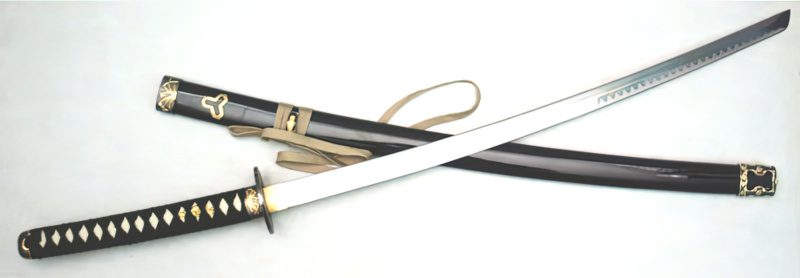
The Hattori Hanzo sword features the traditional mounting typically seen on Japanese swords but in a black, white, and gold color scheme. The hilt or tsuka has white rayskin and black wrapping, with a menuki ornament under the hilt wrapping. It also features matching fuchi and kashira with a gold maple leaf decoration.
Like most Japanese swords, the Hattori Hanzo sword has a rounded tsuba (sword guard) with a cut out design. It also comes in a shiny black saya (scabbard) with decorative carvings—the leaf and the lioness.
Hattori Hanzo Sword vs. Japanese Katana Sword
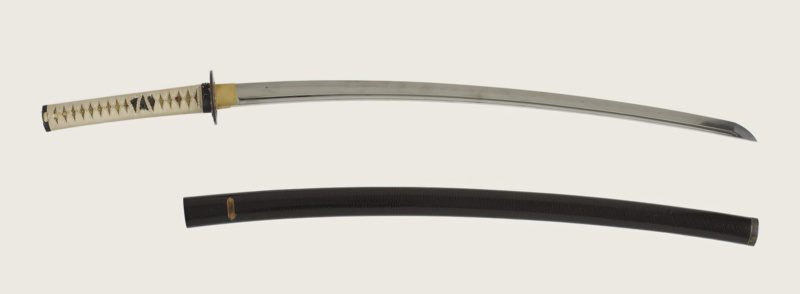
The katana of the samurai warriors of feudal Japan served as the inspiration for the Hattori Hanzo sword in Kill Bill. Martial artists and collectors value the katana sword for its craftsmanship, aesthetic qualities, durability, and historical value. On the other hand, the Hattori Hanzo sword is a fictional sword popular among cosplayers and movie fans.
As the Kill Bill film portrays, the Hattori Hanzo sword is a lethally sharp and extremely resilient weapon, just like the katana of the historical samurai. However, modern replicas of the Bride’s sword are often made from stainless steel and not hand-forged by a licensed Japanese swordsmith. On the other hand, traditionally made katana swords are made from tamahagane.

Also, traditionally-made and battle-ready katana swords are clay tempered, resulting in a natural hamon or temperline pattern. These are the swords used in tameshigiri or test-cutting practice as they can withstand heavy blows. Unlike the Bride’s sword, the traditional katana blade is not reflective and usually darker than modern steel.
Depending on the occasion, the samurai often changed their sword mountings, but the Hattori Hanzo sword is only recognizable for its iconic black scabbard. The samurai also wore their swords on the belt with the cutting edge facing up. However, in the modern era, the fictional character Beatrix Kiddo carried it on her back or by hand.
The Story of the Hattori Hanzo Sword
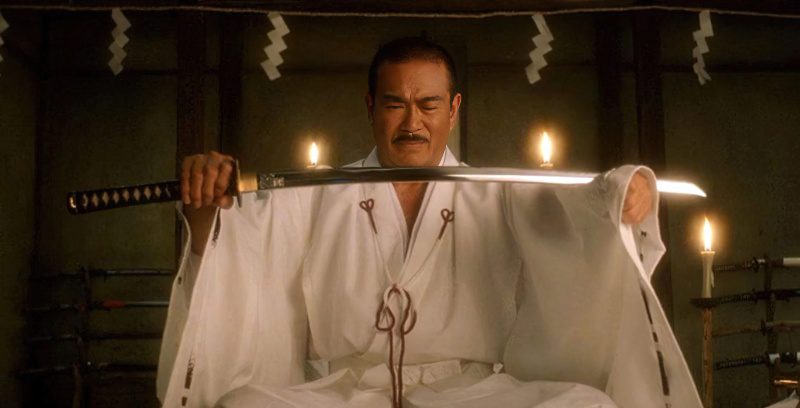
In Kill Bill Vol.1, an assassin known as the Bride, later revealed as Beatrix Kiddo, is massacred at her wedding party. However, she survives, and after recovering from a four-year coma, she sought revenge against the culprits—her former boss and lover, Bill, and his associates, the Deadly Viper Assassination Squad.
The Bride travels to Okinawa, Japan and finds swordsmith Hattori Hanzo to ask him to create the finest katana sword. At first, Hanzo declines as he regrets making instruments of death. Still, the Bride persuades him by revealing her intent to kill Bill, his former student. It takes him thirty days to create the sword designed for killing Bill. He even says that if god gets in the Bride’s way, god will be cut.
In the first film, the Hattori Hanzo sword serves as an instrument for killing Bride’s enemies, including O-Ren Ishii and her katana-wielding gangsters. The story portrays the Bride’s sword as the most superior of all weapons as it could slice through another sword. The Bride also uses it to decapitate her enemies, cut their limbs, and defeat all of them.
In Kill Bill Vol.2, Elle Driver, a member of the Deadly Viper Assassination Squad, tries to kill Beatrix Kiddo with the Bride’s sword. Fortunately, Beatrix finds another Hattori Hanzo sword, owned by Bill’s brother during her fight with Elle. On the final face-off, Beatrix and Bill use katana swords in a fight. However, she kills him using the so-called five-point palm exploding heart technique—a kung fu move and the deadliest blow in martial arts—not the Hattori Hanzo sword designed for killing Bill.
Was Hattori Hanzo a Real-Life Person?
In the West, Hattori Hanzo may be most famous for its appearance in Kill Bill and popular media. However, the historical Hattori Hanzo was not a swordsmith, but a ninja or a samurai. Some historians even believe it to be a family title or position as there were at least four Hattori Hanzos in the annals of history.
Meaning of Hattori Hanzo
The Hattori seems to be a family name originated from Iga Province in Japan. On the other hand, Hanzo is a popular title given to the head of the Hattori family and not a first name. Generally, a child was born with a first name and the family name of Hattori. When he succeeded his predecessor as the Head of the Hattori Family, he was called Hattori Hanzo.
The Four Versions of Hattori Hanzo
The Hanzo clan in the Iga province were fierce warriors. Many went by the name Hattori Hanzo. Some historians believe that the first was a true ninja. However, his sons and grandsons were bushi or samurai during the Sengoku and early Edo periods and the Japanese do not consider the last three as ninja.
Hattori Hanzo I
It is unclear when the concept of a Hattori Hanzo as a clan leader emerged, though Hattori Yasunaga was the first in the line of recorded Hattoris. Many believe he was a ninja leader of the family, though it remains unknown if he was an elder or skilled ninja in their hierarchical system.
Hattori Hanzo I was from Iga and moved to serve the shogun Ashikaga Yoshiharu and then the Tokugawa clan. He wrote the historical scroll Ninpiden, one of the manuals on ninjutsu and passed it down to his son Masanari who later became the Devil Hanzo.
Hattori Hanzo II (1542-1596)
The son of Hattori Yasunaga, Hattori Hanzo II is sometimes referred to as Hattori Masanari The Elder, though some references use Masashige—an alternative to Masanari. His nickname was Devil Hanzo or Oni Hanzo due to his fearsome tactics in warfare. He also had the title Hattori Iwaminokami.
Hattori Hanzo II was the son of a ninja and a samurai. He was a great general under Tokugawa Ieyasu who gave him his famed spear. Apart from being a spearman, he was also recognized for his swordsmanship skills. He served at the Battle of Anegawa in 1570 and the Battle of Mikatagahara in 1573.
Hattori Hanzo III (1565-1615)
Upon the death of Hattori Hanzo II, his firstborn son, whose name was also Masanari, succeeded him. Hence, Hattori Hanzo III is known as Hattori Masanari The Younger. However, some accounts show that he was a poor leader and the ninja did not consider him worthy of the name Hanzo. In 1605, the Band of Iga was divided into four factions, and a rebellion was led against his leadership.
Hattori Hanzo IV (1580-1652)
The second son of Hattori II, Hattori Hanzo IV was also known as Hattori Masashige. After the death of his brother, he took the name of Hattori Hanzo. However, he fell into disgrace during the early Edo period, and some believe that the Hattori family moved to the service of the Kuwana family.
The Hattori Hanzo Sword in Cosplay
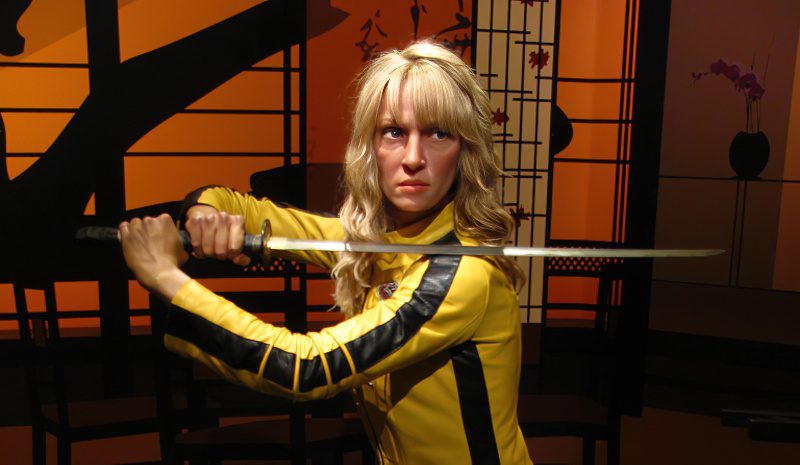
Kill Bill remains popular in cosplay with many following the iconic look of Uma Thurman in her yellow-and-black tracksuit. Since the Hattori Hanzo sword is a katana, it is a versatile cosplay weapon suited for various characters including samurai, assassins, and anime heroes. Though some may utilize it as a ninja sword, the ninjato typically has a rectangular sword guard, as commonly portrayed in films and anime.
Conclusion
The Hattori Hanzo sword plays a significant role in Beatrix Kiddo’s revenge in the film series by Quentin Tarantino. One of the most popular martial arts films, Kill Bill remains popular in pop culture. It is no wonder that the Hattori Hanzo sword is highly sought-after by movie fans, sword enthusiasts, cosplayers, and collectors worldwide.
